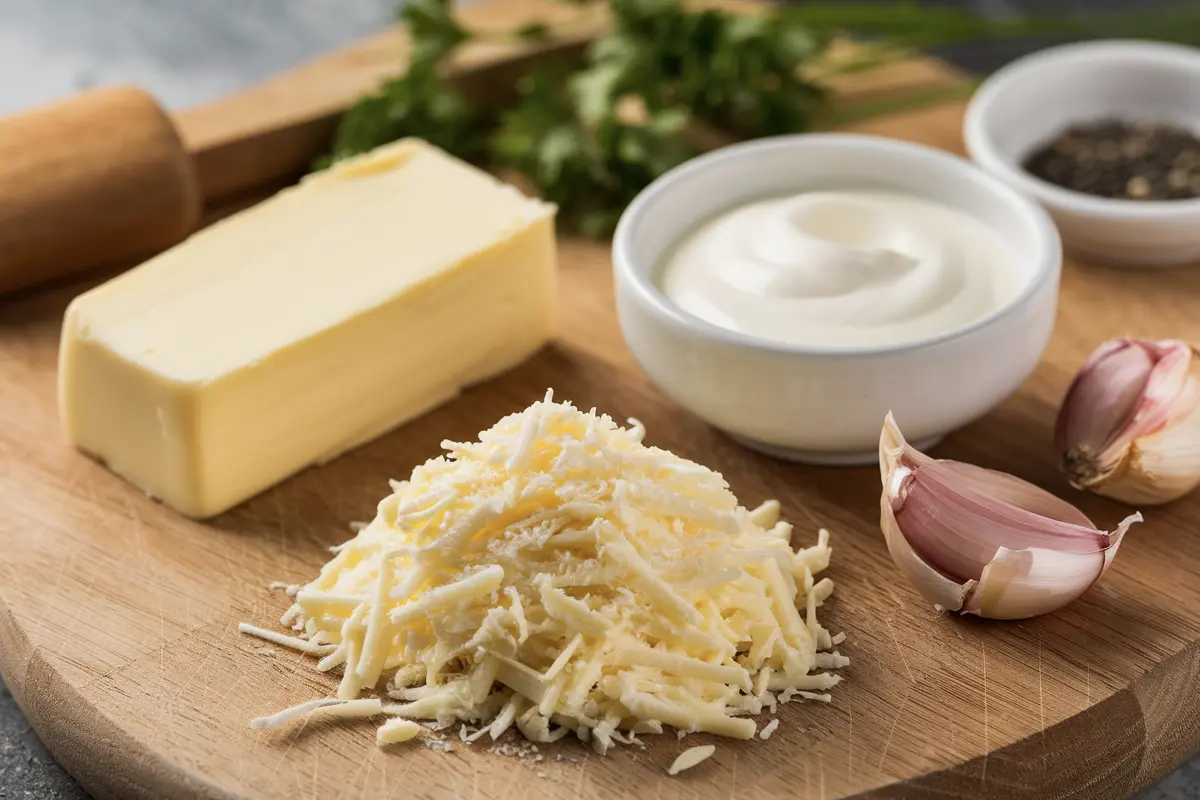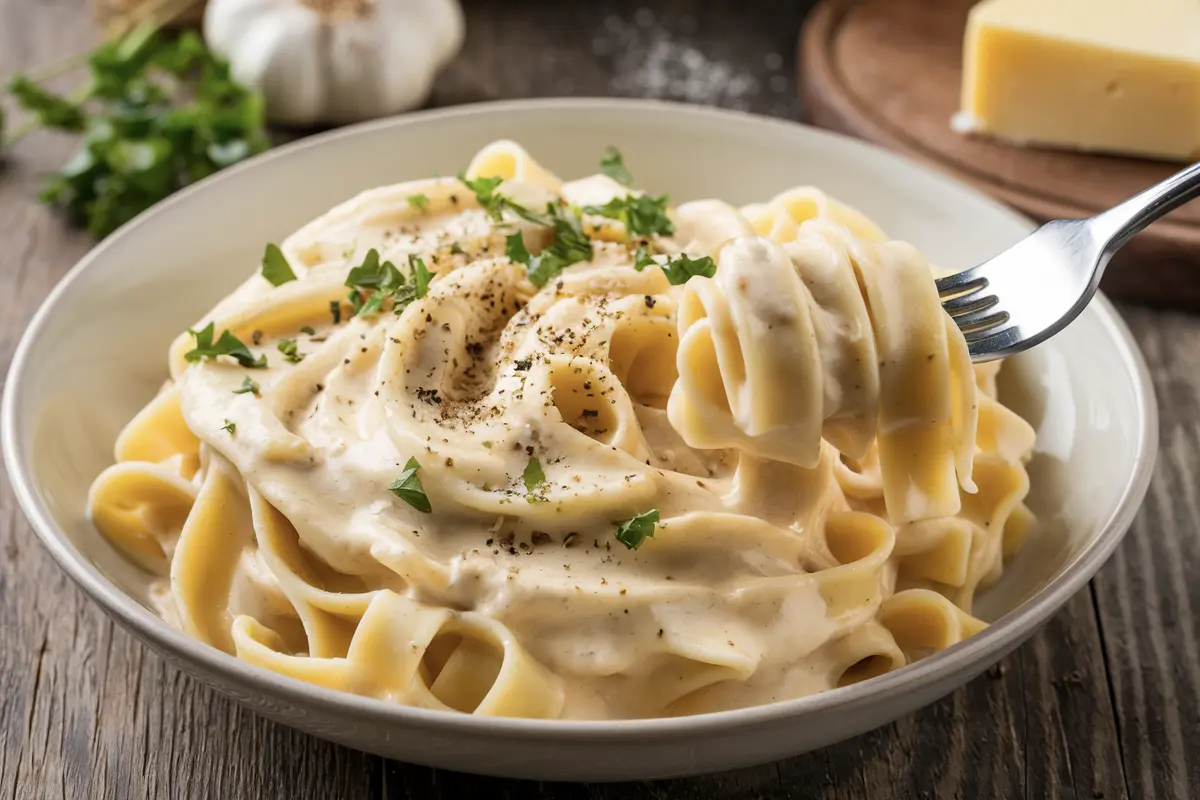What’s the Difference Between Alfredo and Fettuccine Sauce?
When it comes to Italian-American cuisine, the terms Alfredo and fettuccine are often mentioned together, leading to confusion about whether they refer to the same thing. In reality, Alfredo refers to a type of sauce, while fettuccine is a type of pasta. This distinction might seem minor, but understanding it opens up a world of culinary possibilities, where the type of sauce and pasta pairing can make or break a dish. In this article, we will explore everything you need to know about Alfredo sauce, the sauces that pair well with fettuccine, and how they differ in flavor, preparation, and nutritional content.
What is Alfredo Sauce?
Alfredo sauce is a creamy, buttery sauce that has become synonymous with comfort food in Italian-American cuisine. It is traditionally made with butter, heavy cream, and Parmesan cheese, giving it a rich and indulgent flavor that pairs exceptionally well with pasta like fettuccine. The smooth texture of Alfredo sauce is designed to cling perfectly to pasta, creating a harmonious blend of flavors in every bite.
The Origins of Alfredo Sauce
The story of Alfredo sauce begins in Rome, Italy, where it was first created by a chef named Alfredo di Lelio in the early 20th century. The original recipe was quite simple: a mixture of butter and Parmesan cheese tossed with fresh pasta. This dish was served in Alfredo’s restaurant and quickly became a favorite among locals and tourists alike. However, when it was introduced to America, chefs adapted the recipe by adding heavy cream to create the version that is widely known and loved today.
Key Ingredients in Traditional and Modern Alfredo Sauce
The basic ingredients for traditional Alfredo sauce include:
- Butter: Provides a rich and smooth base.
- Parmesan Cheese: Adds a sharp, nutty flavor.
- Heavy Cream: (In American adaptations) enhances the creaminess and richness of the sauce.
Modern variations might also include:
- Garlic: Adds depth and aroma.
- Parsley: Offers a fresh, herbal touch.
- Other cheeses such as Romano or Asiago for added flavor complexity.
Popular Variations of Alfredo Sauce
Beyond the traditional preparation, many variations of Alfredo sauce cater to different tastes and dietary needs:
- Garlic Alfredo Sauce: Incorporates roasted garlic for a more robust flavor.
- Vegan Alfredo Sauce: Uses cashew cream or coconut milk instead of dairy to provide a plant-based option.
- Low-Fat Alfredo Sauce: Utilizes skim milk, low-fat cheese, or Greek yogurt to reduce the calorie count without compromising on taste.
Each variation offers a unique twist, making Alfredo sauce a versatile choice for various pasta dishes.
What is Fettuccine?
While Alfredo sauce refers to the sauce itself, fettuccine is a type of pasta. The name “fettuccine” comes from the Italian word for “little ribbons,” referring to the flat, thick noodle shape that is ideal for holding creamy sauces like Alfredo. Because of its sturdiness, fettuccine can support a variety of sauces, from creamy to tomato-based, without becoming overwhelmed.
Common Sauces Served with Fettuccine
Aside from Alfredo sauce, several other sauces are popularly paired with fettuccine:
- Marinara Sauce: A classic tomato-based sauce with garlic, basil, and oregano.
- Bolognese Sauce: A hearty meat-based sauce, often made with ground beef, pork, or veal.
- Carbonara Sauce: Made with eggs, cheese, pancetta, and pepper, offering a creamy, savory flavor.
For those seeking a healthier alternative, there are many Healthy Alternatives to Alfredo Sauce that can be paired with fettuccine for a lighter, yet equally satisfying meal.
Pairing Fettuccine with Different Sauces
Choosing the right sauce for your fettuccine is essential for creating the perfect pasta dish:
- Alfredo Sauce: Ideal for those who enjoy a creamy, rich flavor.
- Tomato-Based Sauces: Perfect for a lighter, tangier dish.
- Pesto Sauce: Offers a fresh, herbaceous option that complements the chewy texture of fettuccine.
Key Differences Between Alfredo and Other Fettuccine Sauces
Understanding the key differences between Alfredo sauce and other sauces that can be served with fettuccine helps you choose the right flavor profile for your meal:
- Ingredients: The primary distinction is in the ingredients. While Alfredo sauce is cream-based, other sauces like Marinara and Pesto use tomatoes, basil, nuts, and olive oil.
- Taste and Texture: Alfredo offers a rich, buttery flavor, while sauces like Carbonara provide a savory, smoky taste.
- Nutritional Profile: Alfredo tends to be higher in calories due to the heavy cream and cheese content. On the other hand, tomato-based sauces are typically lower in fat and calories.
Flavor Profile Comparison
The differences in flavor profiles between Alfredo and other sauces paired with fettuccine are notable:
- Creamy Alfredo Sauce: Rich, buttery, and velvety, making it perfect for indulgent meals.
- Marinara and Other Tomato-Based Sauces: Tangy, acidic, and fresh, suitable for lighter meals.
- Bolognese and Meat-Based Sauces: Savory, hearty, and perfect for those who prefer robust flavors.
How to Make Alfredo Sauce at Home

For those who want to experience the authentic taste of Alfredo sauce, making it at home is straightforward. Here’s a step-by-step guide:
- Ingredients:
- 1 cup heavy cream
- 1/2 cup butter
- 1 cup Parmesan cheese, grated
- 2 cloves garlic, minced (optional)
- Salt and pepper to taste
- Instructions:
- Melt the butter in a pan over medium heat.
- Add the minced garlic and sauté until fragrant.
- Pour in the heavy cream and simmer for 5 minutes.
- Slowly stir in the Parmesan cheese until fully melted and the sauce thickens.
- Season with salt and pepper.
Tips for a Perfect Alfredo Sauce Consistency
- Use high-quality Parmesan cheese for a smoother texture.
- Avoid overheating the sauce, as it can cause separation.
- For a healthier version, substitute some of the cream with Greek yogurt or use a low-fat milk alternative.
Popular Fettuccine Dishes and Their Sauces
Beyond the iconic Fettuccine Alfredo, there are several other delicious fettuccine dishes worth exploring:
- Fettuccine Bolognese: Combines the flat, wide pasta with a rich, slow-cooked meat sauce.
- Fettuccine with Pesto: Offers a refreshing combination of basil, pine nuts, garlic, and Parmesan cheese blended with olive oil.
- Fettuccine with Marinara: A simple, yet flavorful option featuring a tomato-based sauce that brings out the pasta’s natural flavor.
Regional Variations of Fettuccine Dishes
Italian cuisine is known for its regional diversity, and fettuccine dishes are no exception. For example:
- In Northern Italy, fettuccine may be served with Alfredo or a creamy mushroom sauce.
- In Southern Italy, lighter, tomato-based sauces like Marinara are more common, highlighting the freshness of local ingredients.
Health Considerations: Alfredo Sauce vs. Other Sauces
When it comes to health considerations, the choice between Alfredo and other sauces can make a significant impact on your meal’s nutritional content:
- Caloric Content: Alfredo sauce is high in calories due to its heavy cream and cheese content.
- Fat Levels: Cream-based sauces like Alfredo contain higher levels of saturated fat, whereas tomato-based sauces like Marinara are lower in fat.
- Lighter Options: For those looking to cut calories, consider using alternatives like zucchini noodles or whole-grain pasta and pairing them with a lighter sauce.
Making Healthier Choices
To make your pasta dishes healthier:
- Use whole-wheat or gluten-free pasta options.
- Opt for sauces with more vegetables and less cream.
- Experiment with lower-fat versions of classic sauces, such as using cashew cream for a vegan Alfredo.
Frequently Asked Questions (FAQs)
1. Is Alfredo sauce the same as fettuccine?
No, Alfredo sauce is a type of creamy sauce, while fettuccine is a type of pasta. They are often paired together, but they are not the same.
2. Why is Alfredo sauce so popular?
Alfredo sauce is popular for its rich and creamy flavor, which provides a comforting and indulgent dining experience.
3. Can I use fettuccine for other sauces?
Absolutely! Fettuccine pairs well with a variety of sauces, including Marinara, Pesto, and Bolognese.
4. How can I make Alfredo sauce healthier?
To make a lighter version of Alfredo sauce, consider using Greek yogurt or a low-fat milk alternative instead of heavy cream.
5. What’s the difference between Alfredo and carbonara sauce?
While Alfredo is a cream-based sauce, carbonara is made with eggs, cheese, pancetta, and pepper, offering a different texture and flavor profile.
Conclusion
Understanding the difference between Alfredo sauce and the various sauces that can be paired with fettuccine can significantly enhance your pasta-making skills and dining experience. While Alfredo sauce offers a rich, creamy flavor that pairs perfectly with the flat, wide noodles of fettuccine, other sauces like Marinara, Pesto, or even lighter options such as Primavera bring their unique tastes to the table. If you’re curious about how different types of sauces can be used with pasta, explore more about the refreshing and vegetable-packed option of Fettuccine Primavera and learn What Primavera Sauce is Made Of for another delightful pairing with fettuccine.
By expanding your knowledge of pasta and sauce combinations, you can diversify your cooking repertoire and discover new favorites. For instance, understanding Why It’s Called Pasta Primavera or exploring the Role of Primavera in Italian Cooking can provide insights into crafting fresh, seasonal dishes that align with authentic Italian culinary traditions. And if you’re still confused about pasta types, consider diving into the nuances of The Difference Between Pasta and Fettuccine to broaden your pasta knowledge further.
By mixing and matching different sauces and pasta types, you can create an endless variety of delicious dishes, whether you’re in the mood for something creamy and indulgent like Alfredo or a lighter, vegetable-based option like Primavera. So, roll up your sleeves, get into the kitchen, and start experimenting with these versatile flavors to find your perfect pasta dish!

